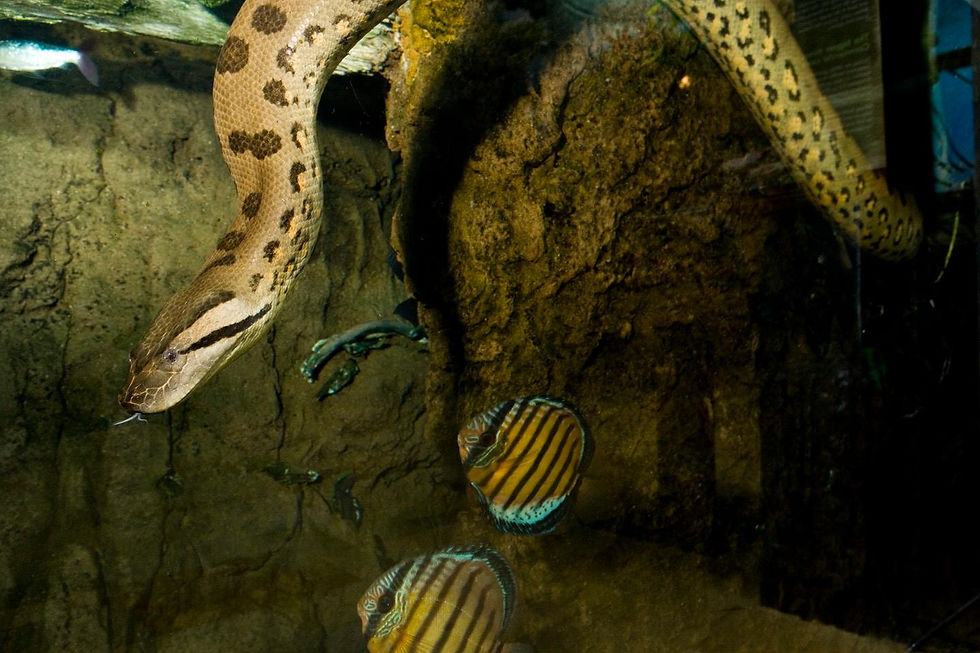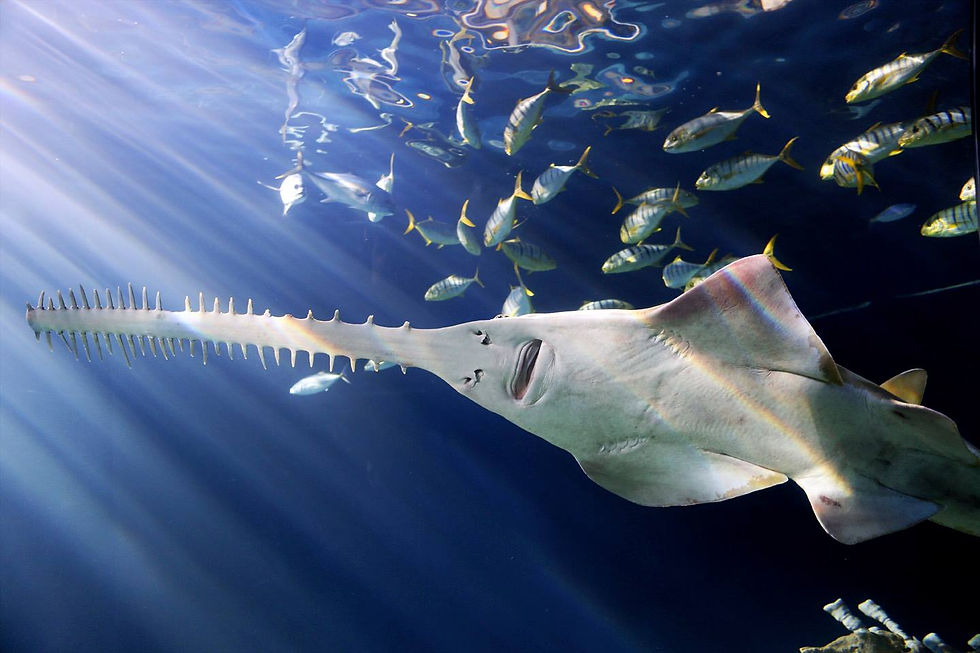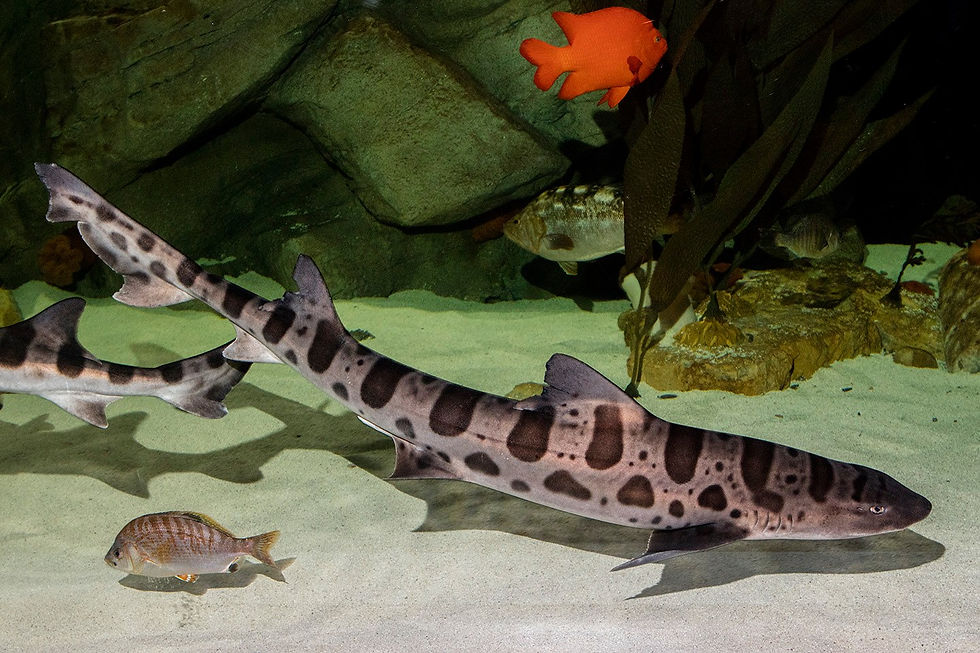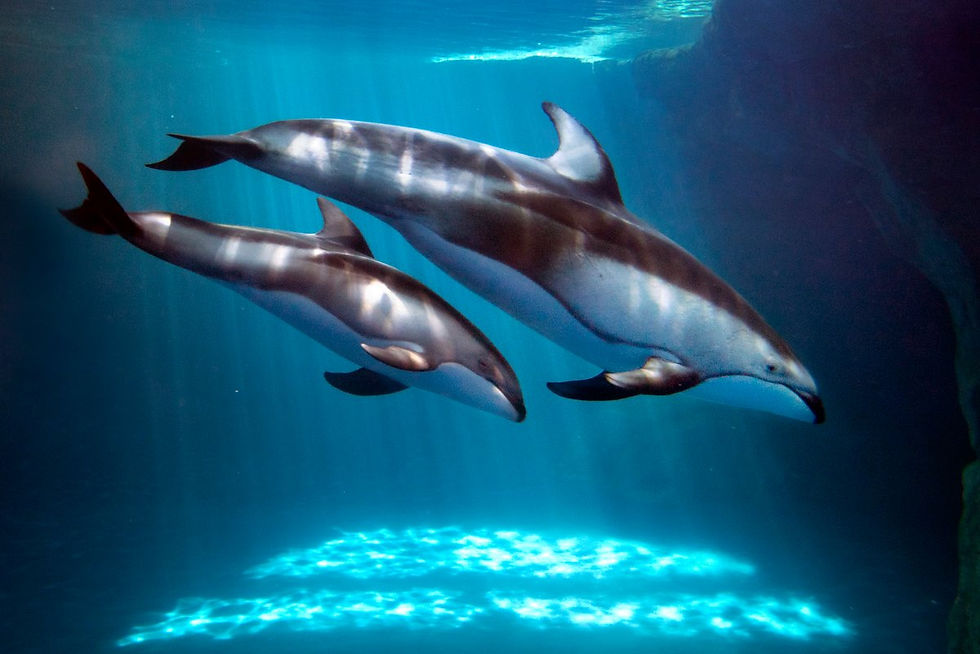For decades, Shedd Aquarium in Chicago has been regarded as one of the best aquariums in the world. In 2016, it appointed Dr. Bridget Coughlin as its President and CEO, only the third leader of the aquarium in the past fifty years. She has a number of visions and ideas for how Shedd Aquarium can continue to be innovative and impactful in the future. Here is her story.

@ Shedd Aquarium
Prior to joining Shedd Aquarium, Bridget Coughlin had never worked in aquariums. However, her background in museums and biochemistry gave her a unique perspective coming in. “I have been at the aquarium for a year and a half so I’m very much just getting started,” she remarked. “I worked for a decade in a natural history museum, then did science policy and then was a geek on the bench doing science research. For me, it’s about earth conservation, which is a compelling way to target it. Even prior to the conservation drive for me, it was the biology and science perspective. The biochemistry side of life is very thrust but fragile when the conservation ethic comes into it all.”

@ Shedd Aquarium
Coughlin always valued sharing science with other people. “Even when I was doing bench research, I would have all these satellite projects about communicating science to a variety of audience,” she elaborated. “I tutored and gave lectures and media interviews. Science is intrinsically interesting to humans but you have to tell the compelling narrative to your audience. That’s what we do with our nearly 2 million annual guests at Shedd Aquarium.” Coughlin considered communicating science through a compelling narrative as the common thread throughout her career.

@ Shedd Aquarium

@ Shedd Aquarium
When working at the Denver Museum of Natural History in 2015, Coughlin was approached by an executive search firm looking for Shedd Aquarium’s successor to then longtime President and CEO Ted Beattie. “I don’t think they even got the sentence fully out of their mouth before I told them to consider me,” she remembered. “I didn’t have to give it a nanosecond to put my hat in the ring.” By this time, Shedd Aquarium had become considered one of the best aquariums in the world and a leader in ocean conservation. “Shedd’s reputation proceeded it,” Coughlin added. In April 2016, Coughlin was named its new President and CEO- only the fourth in Shedd Aquarium history.

@ Shedd Aquarium

@ Shedd Aquarium
The new executive is using her science and business background to integrate with Shedd’s mission. “I see guest experience, animal welfare and conservation through a biology and science lens of how it works in concert- how ecosystems work in concert, how an organism’s own biology all works in concert,” Coughlin reflected. “The other thing I brought that’s completely different is a business mindset about how we cannot just rest on our laurels and need to engage people not just at the aquarium but where they work and play in the community. Conservation organizations must operate like a business and need to sustain themselves. If there’s no money, there’s no mission and there’s no more important mission than saving species from extinction.”

@ Shedd Aquarium
Shedd Aquarium already had much to admire. “The diversity of Shedd’s animals and the breadth of complex ecosystems we bring to Chicago is remarkable,” Coughlin added. “[The fact we provide] a passport to the world for the Midwest is remarkable and the fact we’ve stood the test of time is awe inspiring.” However, the new leader knew it could get even better.

@ Shedd Aquarium

@ Shedd Aquarium
Shedd Aquarium has ambitious plans for projects at the aquarium, offsite and digitally- a phrase Coughlin coined Here, There and Everywhere. “We’re going to make it so a person that doesn’t even know Shedd Aquarium is in Chicago can visit us,” Coughlin pointed out. “We’re going to leverage the successes we’ve built, revitalize some of our exhibits and have a stronger conservation narrative for guests. The [concept of the] sixth mass extinction is weighty and challenging; how can we flip the tenor of conservation to action and impact? One million of our guests are new every year so we might be their first foray into conservation conversations. If we can make them feel empowered to make personal choices for the earth as well as how to use the power of their votes and voice[with consideration of the environment,] we can turn the tide”

@ Shedd Aquarium

@ Shedd Aquarium
For instance, Coughlin noted that, since the aquarium has several exhibits with sharks, rays and other keystone species, Shedd plans on doing a “better job with incorporating their unfortunate contemporary message.” She also has an even more out-of-the-box idea. “I’m a human biochemist and studied human sense of taste,” Coughlin explained. “I was curious if the various salinities of ocean are perceptible by the human sense of taste. I asked our water lab to take the ocean’s different depths and do a flight of water for different salt waters. You will come in, see our various habitats and approach a water dispensing exhibit where you can take a recycled paper cup and take shots of saltwater. You will get to map where the saltiest oceans are and why and contrast that to brackish water. Instead of just seeing the animals and occasionally touching them, you will literally taste the habitat the animals live in. We’re going to be putting the animal’s world into the human world.”

@ Shedd Aquarium

@ Shedd Aquarium
The overarching idea is for the aquarium to “infuse science” into its guest experience. “We changed our aquarium presentation with dolphins to talk about why dolphins have phalanges like our hands,” Coughlin remarked. “We talk about how what that means as an amazing story about dolphin evolution. [We’re looking at finding] wonderful ways [for guests] to touch different skins of animals as many aquariums in Japan have synthetic scales you can touch.”

@ Shedd Aquarium

@ Shedd Aquarium
Shedd Aquarium is even looking at art museums for inspiration. “There are compelling examples from the art museum world where visitors are allowed to text a number with a key word and, they in turn, receive a piece of art relevant to what they sent,” Coughlin articulated. “Through their immense collection, they can connect people with an artist or piece of art they otherwise wouldn’t have exposure to and have a personally relevant experience. This isn’t just a cursory emoji of art. This is real curator. Imagine if zoos and aquariums did that with animals. These are the type of ideas we are exploring.”

@ Shedd Aquarium

@ Shedd Aquarium
One of the main challenges the Shedd Aquarium has is its capacity and circulation, which Coughlin plans on addressing. “We have seasonal peaks and are challenged to meet guest needs for everyone who wants to get into the aquarium,” she stated. “We have to improve circulation and ticketing to meet those challenges head on.”

@ Shedd Aquarium

@ Shedd Aquarium
Another change has been the ticket pricing of the aquarium. “We used to have a four-tiered price structure and figured out a business model that redefined general admission and access- making it one price,” Coughlin explained. “We now have two ticket prices: one for Chicago residents and one for non-Chicago residents. We also have 52 free days a year including the entire month of September for Illinois residents. We want our mission to be more accessible. Now visitors don’t have to stop every other exhibit to show their ticket and have staff who used to be bouncers are now welcoming staff.”

@ Shedd Aquarium

@ Shedd Aquarium
Something Coughlin is very proud of is the animal rescue work done by the Shedd Aquarium. “Shedd intentionally dedicates a tremendous amount of resources to animal rescue,” she remarked. “I have staff in three time zones working to rescue animals. That’s essential to the welfare of one individual animal who is difficult to budget in but has paramount importance. We’ve cared for rescue animals for over fifty years.”

@ Shedd Aquarium

@ Shedd Aquarium
More broadly, Shedd has emphasized optimal animal welfare strongly. “We’ve recently incorporated animal welfare as part of our all-staff onboarding,” Coughlin elaborated. “We call it One Shedd. There is an animal welfare discussion component to the onboarding of all 600 of our employees, thousands of volunteers and fifty trustees whether they clean, night watch, do animal husbandry, work in the gift shop or design habitats. It’s part of everyone’s job and training. Our animal care and veterinary care staff developed the academic understanding of animal welfare and what it means in practice. We are implementing ourselves to do even more.”

@ Shedd Aquarium
Currently, Shedd Aquarium is working to reduce plastic usage among the public. “We’ve been focused on not only getting restaurants to not use single use plastic but reducing our own operational footprint,” Bright Coughlin stated. “We asked people to Shedd the Straw. We did an internal plastic audit of our operations. We are a founding member of a national movement to reduce single-use plastics worldwide called the Aquarium Conservation Project. On all fronts we’re looking at the plastic plight and pulling as many levels we can. It’s not just conservation education but partner catalyzation and visitor action.”

@ Shedd Aquarium
“We’ve recently changed our mission it to one that is more strongly about sparking catalyzing compassion, curiosity and conservation for the aquatic world,” Coughlin articulated. “Before we didn’t have the word conservation. It was a mission about connecting and inspiring people but it simply didn’t go far enough. We have to catalyze action and catalyze people to think deeper. Part of our challenge to understanding climate is it’s not on human scale. [We need to get guests to see] what this means to you and your kids and what it means to the animal you’re looking at in the eye. We recreated our core values and chose them [to be ones] not applicable to any company. Ones that enhance our mission to be welcoming, to look nature in the eye and to take action for animals. If you look nature in the eye, I’m just not sure it’s possible to turn your back on nature.”

@ Shedd Aquarium

@ Shedd Aquarium
“All zoos and aquariums are pivoting towards this deep conservation ethos,” Coughlin concluded. “While we may have misfired at first with being too preachy and academic, what I hope we do now is pivot and do it alongside our visitors and honor what they bring to the table. [We value] their personal conservation. We still need to do fieldwork and research but we need to get behind our visitors and stop wagging our fingers at them.”

@ Shedd Aquarium





